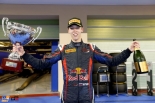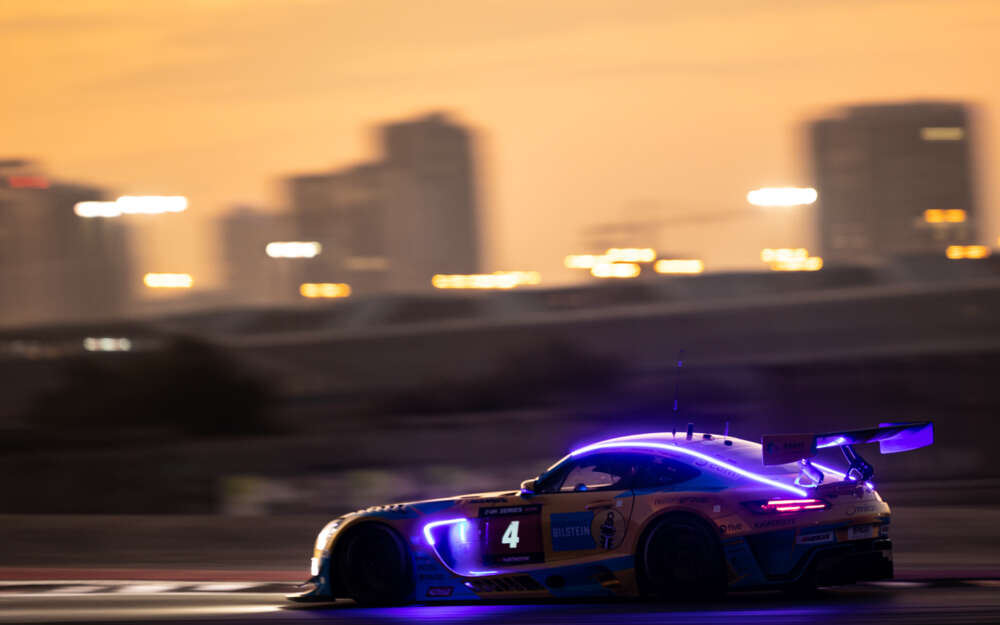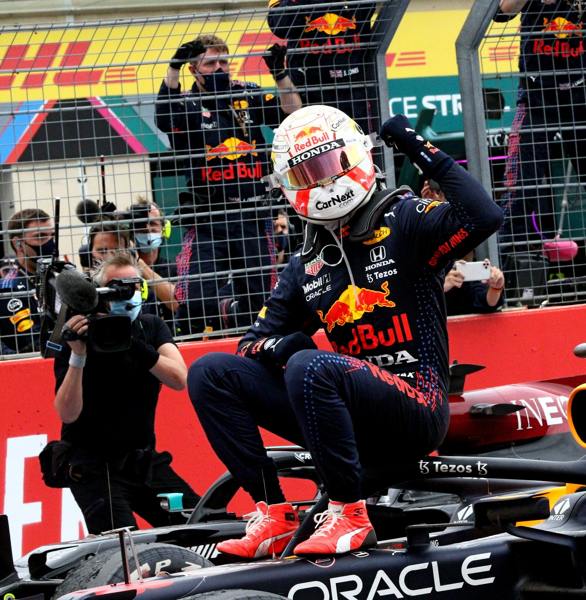
14:41 – In the space of 18 months, Daniil Kvyat has gone from the podium with Red Bull to sitting on the sidelines, with his Toro Rosso car piloted by a fellow racer. GPUpdate.net takes a look at his tumultuous journey.
Timing and talent

Kvyat was identified by Red Bull early in his career as a potential star and in his first single-seater race in 2010 was backed by the drinks giant. Successful results in Formula Renault 2.0 brought Kvyat to GP3, alongside a bit-part F3 campaign, and he was team-mate to fellow Red Bull young gun Carlos Sainz Jr. at MW Arden. Mid-season, it was clear that there would be a vacancy at Toro Rosso for 2014, with Daniel Ricciardo promoted to Red Bull as Mark Webber’s replacement. António Félix da Costa, following a stunning end to 2012, was still the favourite, but a so-so Formula Renault 3.5 campaign – against the likes of Kevin Magnussen and Stoffel Vandoorne – left Helmut Marko weighing up options. Kvyat hit form in GP3, taking successive wins, and Red Bull was impressed by his attitude, ultimately giving him the nod over Felix da Costa. Kvyat went on to clinch the GP3 title.
Rushed Russian rookie

Kvyat became the then-youngest points scorer on his Formula 1 debut in Australia, having made Q3, and added further top 10 finishes in Malaysia and China. Just two more points results followed – ninth in Britain and Belgium – though his retirements were mechanical-inflicted, amid Toro Rosso and Renault’s strife. Red Bull opted to retain Kvyat at Toro Rosso for 2015, but Sebastian Vettel threw a spanner into the works by leaving in favour of a Ferrari seat. Having already signified its intentions to dispense with Jean-Éric Vergne, Red Bull had no other choice but to promote Kvyat to the senior team. It was not a situation Red Bull truly desired, for its hand had been forced by Vettel’s decision.
Points, but not prizes

Kvyat linked up with Red Bull but matters began badly when his car crawled to a halt en route to the grid in Australia. Red Bull had been Mercedes’ primary opponents in 2014 but come 2015 the squad regressed, amid a sub-par chassis and Renault’s ongoing woes. Kvyat scored just five points in five races but kicked on a gear, amid pressure, and finished second in Hungary. He finished the year with more points than Daniel Ricciardo, albeit the Australian hampered by several issues, but questions had arisen. Kvyat shone only occasionally and made some major mistakes – crashing out in Austin and dramatically rolling in qualifying in Japan. From GP3 to Toro Rosso to Red Bull in successive years, it looked like a driver trying too hard to prove himself, accentuated by Red Bull’s own difficult season.
Bull in a China shock

Kvyat’s 2016 got off to a terrible start, amid qualifying woes, but in China he struck back with third place, having survived an early scrape with Sebastian Vettel. The livid Ferrari driver recovered to second and famously confronted Kvyat in the ante-room, though the Russian laughed off Vettel’s complaints, in turn earning himself the ‘Torpedo’ nickname. Kvyat was right to rubbish Vettel’s words, but two weeks later the boot was on the other foot, amid a disastrous opening lap on home soil, in which he twice struck his rival. It ultimately proved perfect timing for Red Bull, which had been concerned about Kvyat’s pace compared to Ricciardo (most notably demonstrated in China), while simultaneously wary that rising protégé Max Verstappen could be acquired by a rival. Prior to the Spanish Grand Prix, the swap was made.
Rebuilding at Toro Rosso

Back in the midfield action, Kvyat struggled, and scored just two points across an eight-race run. Sainz Jr. thrived in the sister car and put in some outstanding drives, while Kvyat often slipped into anonymity. The nadir came in Germany, when Kvyat appeared on the brink of tears, baffled at his absence of pace in Q1. Many felt deep sympathy for Kvyat, who truly needed a break to rebuild his shattered confidence. Kvyat returned from the summer break energised but still added just two points – with ninth in Singapore – to his tally.
Far from Heaven ’17

Kvyat, to the surprise of many, kept his seat, and scored points in Australia and Spain, the latter a stirring drive from the rear of the grid, after a disastrous qualifying performance. However, his form since has plummeted. While one-lap pace, compared to Sainz Jr., has been acceptable, he has failed to score a point, with his racecraft often questioned, highlighted by lap-one clashes in Austria and Britain. He won few friends with his combative language in the wake of the aforementioned intra-team clash at Silverstone. Singapore, perhaps, most acutely captured the difference between the pair. Sainz Jr. scraped into Q3, stayed out of trouble, put in a resilient drive and took fourth. Kvyat, meanwhile, slid into the wall, and into retirement. Conditions were indeed treacherous at that stage of the race, but only he found the barriers. It left the score at 48-4 in Sainz Jr.’s favour; even accounting for a handful of reliability concerns, it marked an uneasy gulf.
What happens next?

If standing Kvyat down from two – perhaps more – Grands Prix is a way of resting him and aiding his career, it is an odd approach. Ever since his demotion from Red Bull, he has been regarded as the fourth man, with Sainz Jr. striving to oust one of Ricciardo or Verstappen. Sainz Jr.’s form and ambition, allied to the engine saga, facilitated his loan move to Renault for 2018; theoretically, if Ricciardo or Verstappen move from Red Bull for 2019, Sainz Jr. will be slotted in. Pierre Gasly is regarded as a near-cert for Toro Rosso in 2018, but what of Kvyat? There are no immediate options for Red Bull, while Super Licence rules will have to be bent if Honda wants to shoehorn in Nobuharu Matsushita. It is not unreasonable, therefore, to consider Kvyat a prominent option for Toro Rosso next year, but for what? His prospects at Red Bull are next to zero, he has endured a dismal time recently, while next season Toro Rosso will be lumbered with a Honda power unit – which, barring an improbable turnaround, will hamper the team’s chances.
Kvyat was promoted through the ranks too quickly, a beneficiary of timing and his own talent, while circumstance, form and failing to deliver contributed to his downfall. Gasly’s Super Formula schedule means Kvyat will likely be back in the car for Austin, but long-term, where does he go from here?
Source :http://feeds.gpupdate.net






















